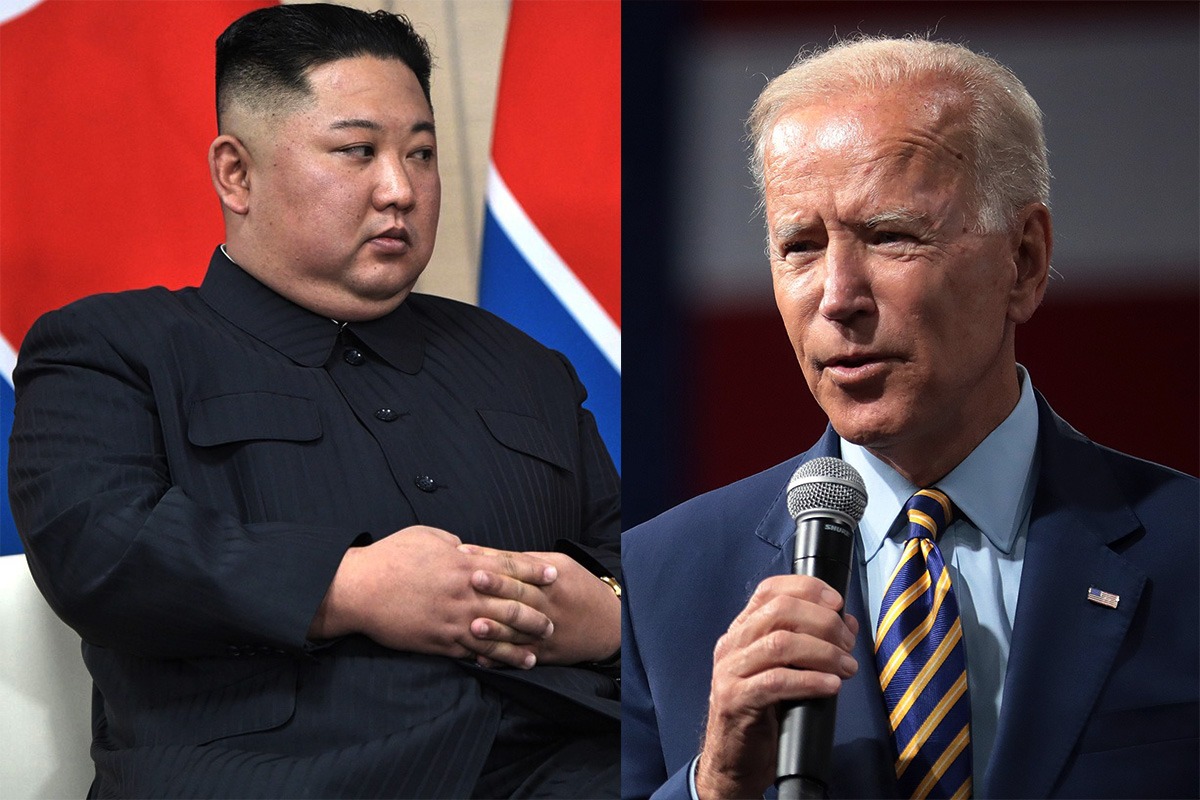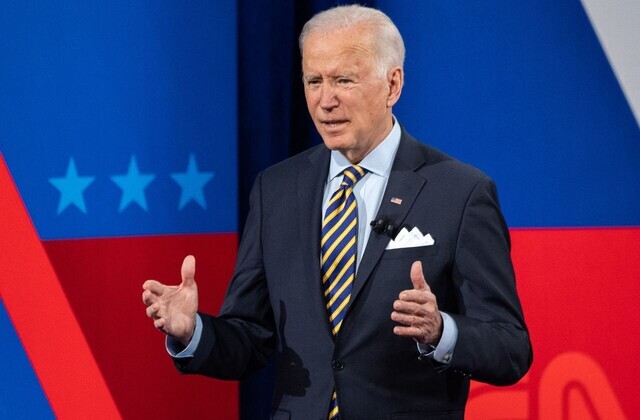Will Biden "Build Back Better" Relations with North Korea?
This week with President Biden sworn in as the 46th President of the United States, the APLN explores what the change in US Administration means for addressing North Korean nuclear problem. APLN Executive Director and Advisor to South Korean President Professor Moon Chung-in, former Director of Los Alamos National Laboratory Professor Siegfried Hecker, and former UN High Representative for Disarmament Affairs Angela Kane, offer their insights in a new APLN video. Drawing on their vast diplomatic experience and technical expertise each assesses possible approaches to tackling the issue, taking into consideration the COVID-19 pandemic, the North Korean economic crisis and the strengths and weaknesses of past US Presidents’ policies.
North Korean Military Advancements and Pronouncements
Earlier this month, to celebrate the Eighth Workers’ Party Congress, North Korea staged a military parade revealing enhanced military capabilities including a new submarine-launched ballistic missile and short range ballistic missile. This comes after DPRK leader Kim Jong-un pledged to expand the nuclear weapons arsenal and military capabilities including with new nuclear warheads, tactical nuclear weapons, longer-range and improved missiles, hypersonic missiles, reconnaissance satellites, solid-fuel intercontinental ballistic missiles and UAVs. With these developments, how will the new Biden administration approach the North Korean nuclear problem?
Learning the lessons of past US administrations
Past US administrations have adopted varying strategies when dealing with North Korea. The Clinton administration responded to North Korea’s intentions to withdraw from the Nuclear Non-Proliferation Treaty with the Agreed Framework in 1994, which consisted of US subsidies in return for the DPRK’s steps toward denuclearization. The agreement did not last although it delayed the DPRK nuclear weapons program by 8 years before the US terminated it.
Presidents Bush and Obama had adopted the “malign neglect” and “strategic patience” approaches, summed up as largely ignoring the North. This assumed that North Korea would come to the table on its own when the regime collapses. But according to Dr Siegfried Hecker, an internationally recognized expert in plutonium science, global threat reduction, and nuclear security, neither regime change nor internal collapse are imminent. Merely waiting will not give the US and allies an upper hand in negotiations.
Trump was the first American president in history to meet a North Korean leader. However, lacking a strategy, Trump walked away from the Hanoi Summit stating that Kim made impossible demands, which the North rejected. Yet, according to APLN Vice-Chair, Professor Chung-in Moon, an expert on US-North Korea relations and nuclear issues, President Trump’s approach should be acknowledged for bringing Kim out of its hermetic state and to an international forum.
Moon says, “I personally believe President Trump did a really good job. He was able to bring Chairman Kim Jong-un to an internationally fora, and had a meaningful discussion. But the problem with President Trump is he didn’t back it up with working-level or practical-level solutions.”
Many have begun to speculate how the new US President, Joe Biden, will approach the DPRK conundrum. Although he has promised to strengthen alliances and renew American leadership, not much has been revealed about the strategy towards North Korea.
According to former UN High Representative for Disarmament Affairs and ELN network member, Angela Kane, President Biden would more or less continue the policy of previous administrations, prior to Donald Trump. Angela Kane elaborated, “That means tightening financial pressure, strengthen ties with South Korea and Japan in particular, and get China to comply with the UN sanctions.”
She noted that nominating Antony Blinken as Secretary of State is a promising move by Biden, “Tony Blinken, actually worked on the North Korea file under the Obama administration… he himself has apparently made a statement that he’d be open to diplomacy with North Korea, which I think is very encouraging.”
According to Professor Moon, there are three contending views within the Biden camp: the denuclearization approach, the arms control approach, and the stable management approach. He explained that the “first view is the so-called denuclearization approach. This approach is basically the Trump approach. North Korea should denuclearize first, and then we’ll come up with a meaningful reward for North Korea. Dismantle first, then we will reward. But North Korea’s not likely to take that approach.
The second approach is what people call the nuclear arms control approach. Even if we cannot recognize North Korea’s status as a nuclear weapon state, we should be aware of North Korea’s nuclear weapons capability.
That being the case, then dismantle-first-and-reward-later won’t work. Then what we have to do is we should pursue a step-by-step incremental approach, which is based on a simultaneous exchange and the principle of action-for-action. And I think that is the only doable approach. But the problem is, this arms control approach seems to be a minority in the Biden camp.
The third approach involves those who advocate stable management of the North Korean situation through deterrence and selective punishment. But this is very much conditional on North Korean behaviour-if North Korea shows patience and self-restraint, and does not engage in any kind of provocative behaviour, then the Biden administration may come up with a step-by-step approach and may be willing to engage in negotiation with North Korea.
But if North Korea just test fire ballistic missiles and undertake their 7th nuclear test, then the Biden administration would come up with a harsh punishment, more than deterrence, and they may even deliberate military action. That would be a nightmarish situation.”
Similar to the second approach identified by Professor Moon, Professor Hecker asserts that developing a “simultaneous path” would be the best way to approach North Korea.
He argues that, “It is unrealistic to expect North Korea to give up its weapons, in other words, to denuclearize first. The much better option is to develop a simultaneous path where the United States and South Korea move towards normalization and a peace process, and North Korea halts, and rolls back, and eventually eliminates the nuclear weapons.”
Experts agree that the biggest challenge for the Biden administration will be to make the North Korean nuclear crisis a top priority among all the many major domestic and international issues the White House must tackle. Nevertheless, it is clear that North Korea’s growing nuclear power poses an existential threat that warrants urgent attention.
Professor Hecker advises, “I would make North Korea a very high priority. Because I think it gets us into much too dangerous territory to have a country which such enormous nuclear capabilities, with which we don’t have a proper relationship with dialogue. And so, my advice will certainly be, that amongst the security issues, North Korea rates among the very highest.”
As tensions continue to rise, the North Korean nuclear crisis must be a foreign policy priority for Biden’s administration. Despite the efforts of previous presidents to limit or arrest North Korea’s nuclear and military developments, the regime is determined to maintain and build their expanding arsenal. Despite Kim’s continued nuclear push, his acknowledgement of the country’s economic sufferings at the Workers’ Party’s 8th Congress may serve as an important point for negotiations.
Looking ahead, President Biden and his team must take into account the failures of prior administrations and pursue measures towards a more peaceful, nuclear weapons-free future. Through advice from experts and lessons learned from past failures, perhaps Biden will be able to build back better relations with North Korea.
About the Author
Elaine Natalie is an APLN Policy Fellow. Katie Yoon and Kim Su-Heun are former APLN Research Interns.
Disclaimer: The opinions articulated above represent the views of the author(s) and do not necessarily reflect the position of the Asia Pacific Leadership Network or any of its members. The APLN’s website is a source of authoritative research and analysis and serves as a platform for debate and discussion among our senior network members, experts and practitioners, as well as the next generation of policymakers, analysts and advocates. Comments and responses can be emailed to apln@apln.network.
Images: Joyce Lee/APLN, Wikimedia Commons.




